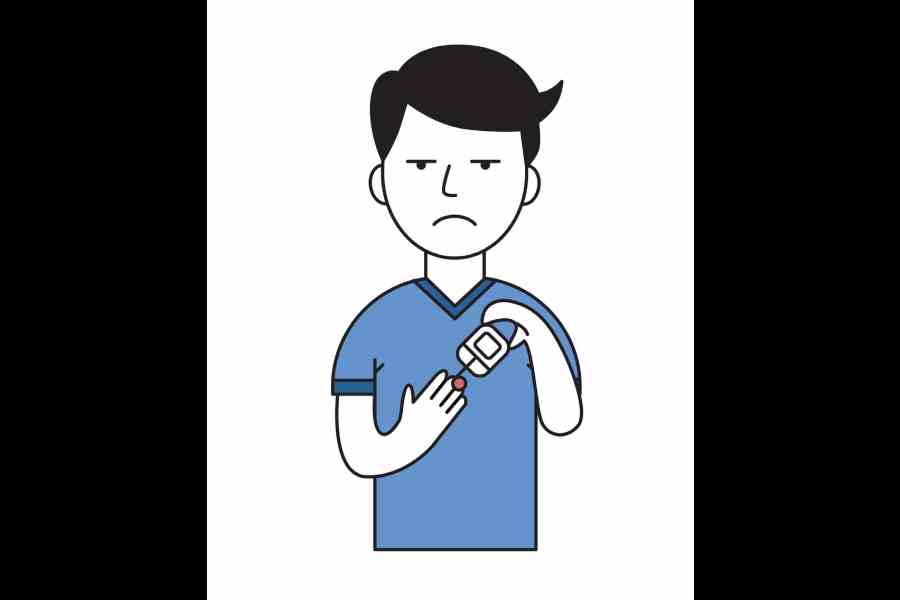Diabetes can occur at any age, from birth to when you are over 70. Often, there are no symptoms at all, and the person is shocked when the blood sugars come back in the 300 or 400 range. Disbelievingly, they say, “How is this possible? I don’t eat sweets. I put very little sugar in my tea and coffee. “
You must remember that 101 million people in India, which has a total population of 1.4 billion, have diabetes. That is 11.4 per cent of the population. There are two basic types of diabetes: patients who are completely insulin dependent (need injections) and those who can manage with tablets alone or a combination of both.
Two hormones secreted by the pancreas control blood sugar levels in the body. Insulin is secreted in
response to high levels of sugar. It lowers the sugar levels. When sugar levels are low, glucagon is released. It releases sugar from stores in the liver to restore blood sugar levels.
The pancreas may not make insulin. The cells that perform this function may not be present from birth or may be damaged. It may be due to a virus infection at any age or an autoimmune reaction in which the body fails to recognise its own cells, mistakes them for genetically different cells and destroys them. This type of diabetes can run in families as the members have inherited a trait that makes their cells susceptible. Diet or lifestyle has nothing to do with the appearance of this type of diabetes.
Normal blood sugar is 90 to 130 mg/dL (5.0 to 7.2 mmol/L). Both the fasting and afterfood levels should be well controlled by the body’s insulin and glucagon, whether you eat a heavy meal or fast. Once this ability is lost, diabetes sets in.
In diabetes, blood sugar levels cross 200 mg/dL after food. In prediabetes, it is between 125 and 200. Gestational diabetes is when high blood sugar values appear during pregnancy. Prediabetes and gestational diabetes are reversible.
Diabetes can remain asymptomatic for many months. After that, there may be unintentional loss of weight, increased thirst, appetite and urination, constant hunger, unexplained fatigue, sores that do not heal, and frequent infections. One of the early visible signs is darkened areas of skin, most often around the neck or in the armpits and groin. It looks like dirt but feels like velvet and cannot be scrubbed off. In teenagers, it indicates a propensity to develop diabetes later in life.
Diabetes used to be considered a disease of middle age but now it is appearing in children and teenagers. Children are less active nowadays. Instead of games and sports, they are addicted to media. They are obese. Many have a strong family history of diabetes. The same factors predispose them to develop the metabolic syndrome X and polycystic ovaries. Both these are precursors of diabetes.
The two most important steps in diabetes management is a healthy, balanced, calorie-controlled diet and 30-40 minutes of daily walking. Insulin sensitivity increases with exercise.
After around a week of this, the sugars need to be reassessed. If they are still high, medication needs to be started to prevent damage to the eyes, kidneys, heart and nerves. If control is not satisfactory even with medication, injectable insulin needs to be started.
Unlike a fever or a fracture that recovers with time, diabetes is a chronic disease that requires modification of lifestyle, regular monitoring and self-control. Even if there is a strong family history of diabetes, it is possible to try and prevent children from becoming diabetic by giving them a healthy diet with limited snacks and aerated sugary cola drinks. Children also need an hour of physical activity daily.
The writer has a family practice at Vellore and is the author of Staying Healthy in Modern India. If you have any questions on health issues please write to yourhealthgm@yahoo.co.in










